Yuelü quanshu 樂律全書 "The whole book on musical tuning" is a book on music written during the Ming period 明 (1368-1644) by Zhu Zaiyu 朱載堉 (1536-c. 1610), courtesy name Boqin 伯勤, style Gouqu shanren 句曲山人. He was a son of Zhu Houwo 朱厚焥 (or Zhu Houwan 朱厚烷, d. 1591), Prince Gong of Zheng 鄭恭王, a member of the imperial house of the Ming, but was not allowed to dwell inside the palace because his father had been eliminated from the line of princely succession.
Zhu Zaiyu wrote quite a few books on music, including Lüxue xinshuo 律學新說, Yuexue xinshuo 樂學新說, Lülü jingyi 律呂精義 (part of the Yuelü quanshu), Yuelü zhenglun 律呂正論, Lülü zhiyi bianhuo 律呂質疑辨惑, Sepu 瑟譜, Zaoman guyue pu 操縵古樂譜, Shigong heyue pu 施官合樂譜, Xiangyin shiyue pu 鄉飲詩樂譜, Liudai xiaowu pu 六代小舞譜, Xiaowu yuepu 小舞鄉樂譜 and Lüli rongtong 律曆融通, as well as some books on mathematics, Jialiang suanjing 嘉量算經, and Suanxue xinshuo 算學新說.
 |
The large words on the top are the words of the air (關關雎鳩,在河之洲). Below that, the basic tone of each syllable is written in terms of the pitch-pipe designations (姑[洗], 蕤[賓], 應[鐘], 南[呂], etc.). Each syllable of the air is accompanied by a qin 琴 and a se 瑟 zither for which different notation systems are used, namely the gongche 工尺 system for the qin (the "strange" characters with 艹 tops and 乚 bottoms), and the pitch-pipe designations for the se zither. |
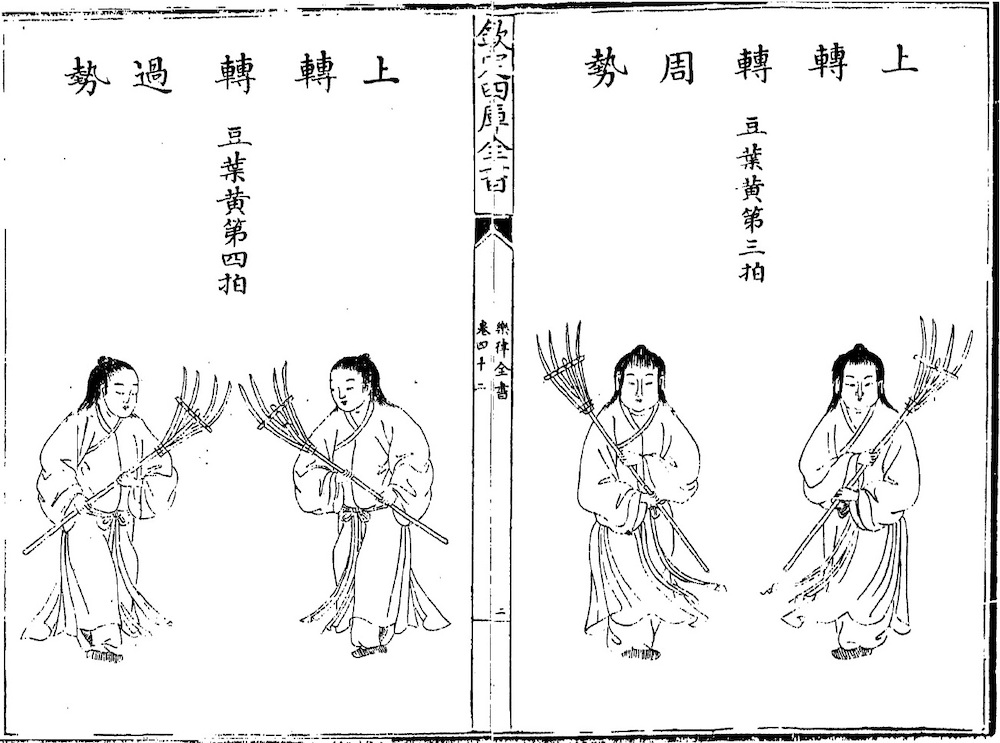 |
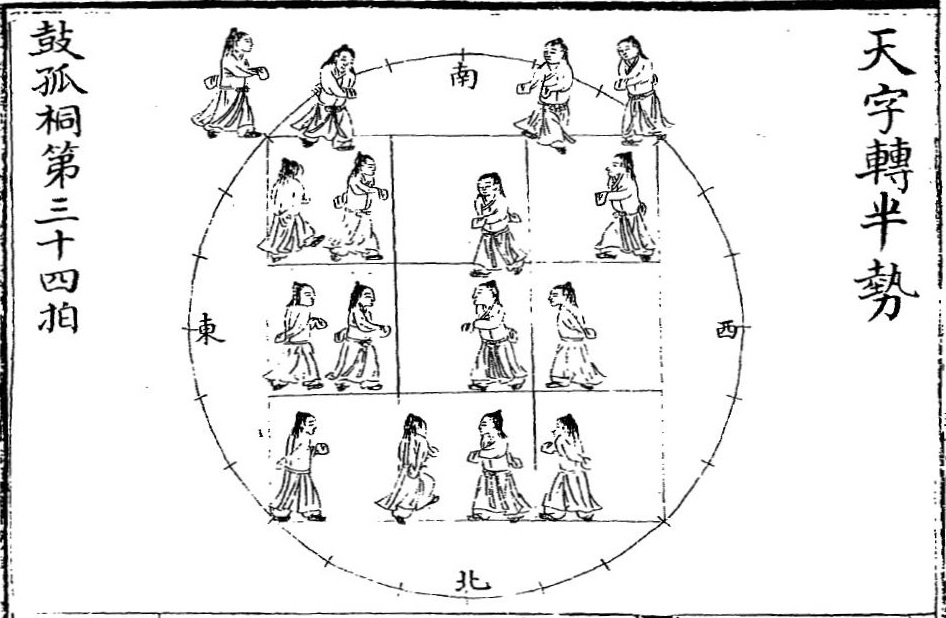 |
The 42-juan long book was finished in 1595 and submitted to the throne during the Wanli reign 萬曆 (1573-1619). The imperial bibliography in the official dynastic history Mingshi 明史 speaks of 40 juan of length. In fact, the Yuelü xinshu consists of eleven texts part of which is not divided into juan, so that it is not quite sure which statement is correct.
The chapter Lülü jingyi 律呂精義 "Essence of the meaning of the pitch-pipes" is the most important part of the book, in which the basics of musical tuning are explained. Zhu Zaiyu argues that a line of 100 grains of millet in the long direction (hengshu 橫黍) has the same length as that of 81 grains of millet arranged side by side (zongshu 縱黍), and this length corresponds to 1 chi 尺 (the carpenter's foot, yingzao chi 營造尺, see weights and measures). He also explains that a pipe with half the length of the Yellow Bell pipe (huangzhong 黃鐘) does not harmonize (ying 應) with that of the full length, but half a Taicu pipe 太蔟 does. This theory was reproduced in the book Lülü zhengyi 律呂正義 from the Kangxi reign-period 康熙 (1662-1722) because it was the most exact explanation of the creation of a full musical scale out of the basic pipe (the Yellow Bell pipe).
 |
Diameters and lengths of the 16 pitch-pipes. The Yellow Bell pipe (huangzhong 黃鐘) has a length of 8 cun 寸 or 80 fen 分, according to the length of the carpenter's foot (yingzao chi 營造尺), which in turn corresponds to the Shang foot (Shangchi 商尺). The diameter of the huangzhong pipe was 4 fen (0.4 cun), that of the notch 2.82 fen. |
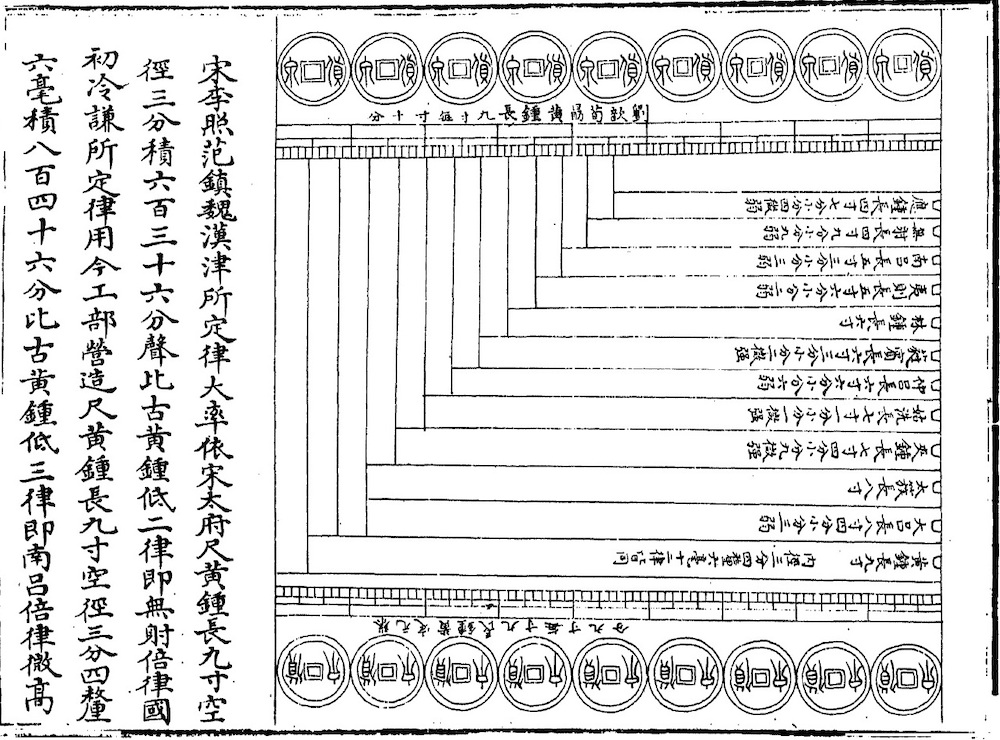 |
Set of 12 pitch-pipes from the Han period 漢 (206 BCE-220 CE) in which the Yellow Bell pipe had a nominal length of 9 chi, corresponding to nine times the diameter of a standard coin (quanhuo 泉貨). |
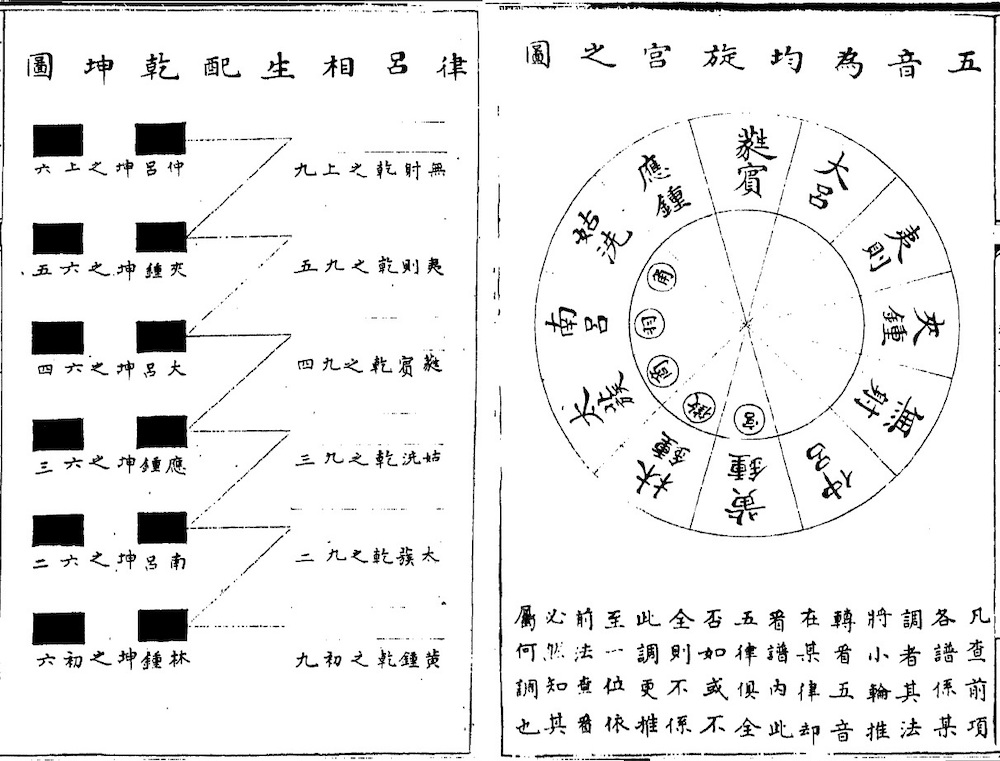 |
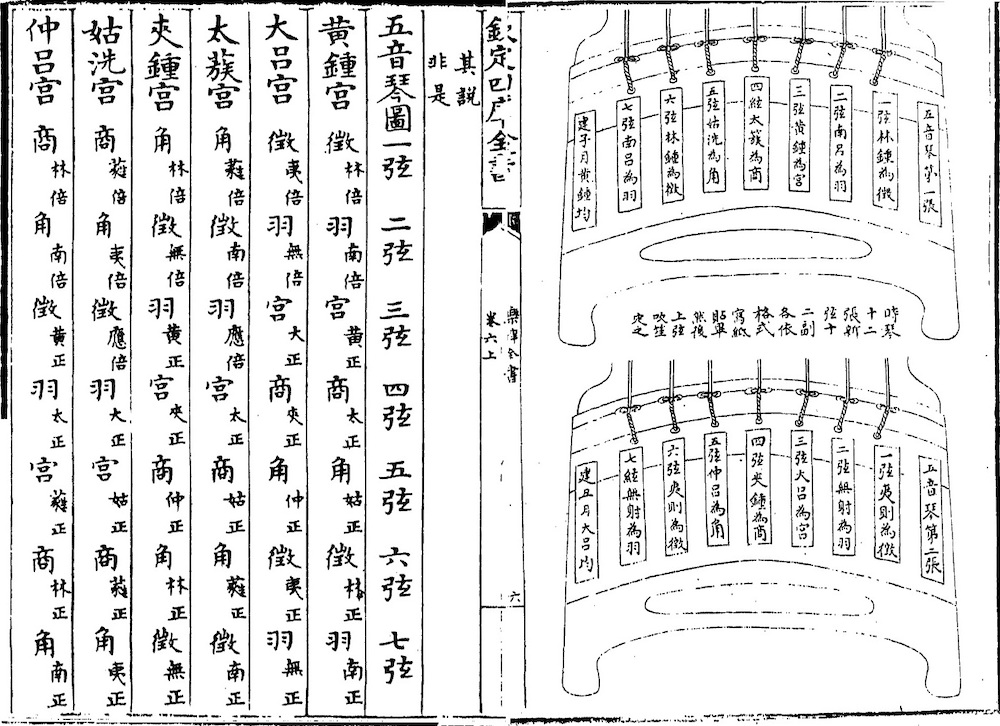 |
The method of the deduction of a system of pitch-pipes from the Yellow Bell pipe and the associated "main pipes" (zhenglü 正律) and "doubling pipes" (beilü 倍律) is based on two different mathematical operations, namely the Pythagorean method (gougu qiuxian 勾股求弦) and the hypotenuse (fangqiuxie 方求斜) method, but the former cannot any more be made use of when constructing the Nanlü pipe 南呂 from the Ruibin pipe 蕤賓 on.
The Lülü quanshu is included in the imperial series Siku quanshu 四庫全書.
| 1596 edition by Zheng Fan 鄭藩 | |||
| I (1-10) | 律呂精義內篇 十卷 | Lülü jingyi neipian | Essence of the meaning of the pitch-pipes, inner chapters |
| II (11-20) | 律呂精義外篇 十卷 | Lülü jingyi waipian | Essence of the meaning of the pitch-pipes, outer chapters |
| III (21-24) | 律學新說 四卷 | Lüxue xinshuo | A new treatise on the science of pitch-pipes |
| IV (25) | 樂學新說 一卷 | Yuexue xinshuo | A new treatise on the discipline of music |
| V (26) | 算學新說 一卷 | Suanxue xinshuo | A new treatise on mathematical science |
| 聖壽萬年曆 二卷 | Shengshou wannian li | The ten-thousand-years calendar of Eternal Sageness | |
| 萬年曆備考 三卷 | Wannian li beikao | Prompt analysis of the ten-thousand-years calendar | |
| 律曆融通 四巻 (附) 音義 一卷 |
Lüli rongtong app. Yinyi |
Relation of the pitch-pipes with the calendar, app. phonetic commentary | |
| VI (27-28) | 操縵古樂譜 一卷 | Caoman gu yuepu | Ancient musical scores of songs for the zither |
| VII (29-30) | 旋宮合樂譜 七種 | Xuangong he yuepu qi zhong | Scores of seven modulations for orchestra |
| VIII (25) | 鄉飲詩樂譜 六卷 | Xiangyin Shi yuepu | Musical scores of village drinking songs in the Classic Shijing |
| IX (37-38) | 六代小舞譜 一卷 | Liudai xiaowu pu | Scores of lesser dances from the Six Dynasties period |
| X (39) | 小舞鄉樂譜 一卷 | Xiaowuxiang yuepu | Scores of lesser dances of the districts |
| 二佾綴兆圖 一卷 | Eryi chuozhui tu | Sketches of dancing steps of old royal dances | |
| XI (40) | 宋儒朱子論舞大略 一卷 | Song Ru Zhuzi lun wu dalüe | Outlines of the Confucian Master Zhu [Xi]'s discussion of dances from the Song period |
| XII (41) | 靈星小舞譜 一卷 | Lingxing xiaowu pu | Scores of lesser dances of the Numinous Star |
Note: The sequence of individual texts as presented in the series Siku quanshu 四庫全書 differs from the original arrangement in the 1596 print. Compare Shanghai tushuguan 上海圖書館 1982), Vol. 1, 616. |
|||